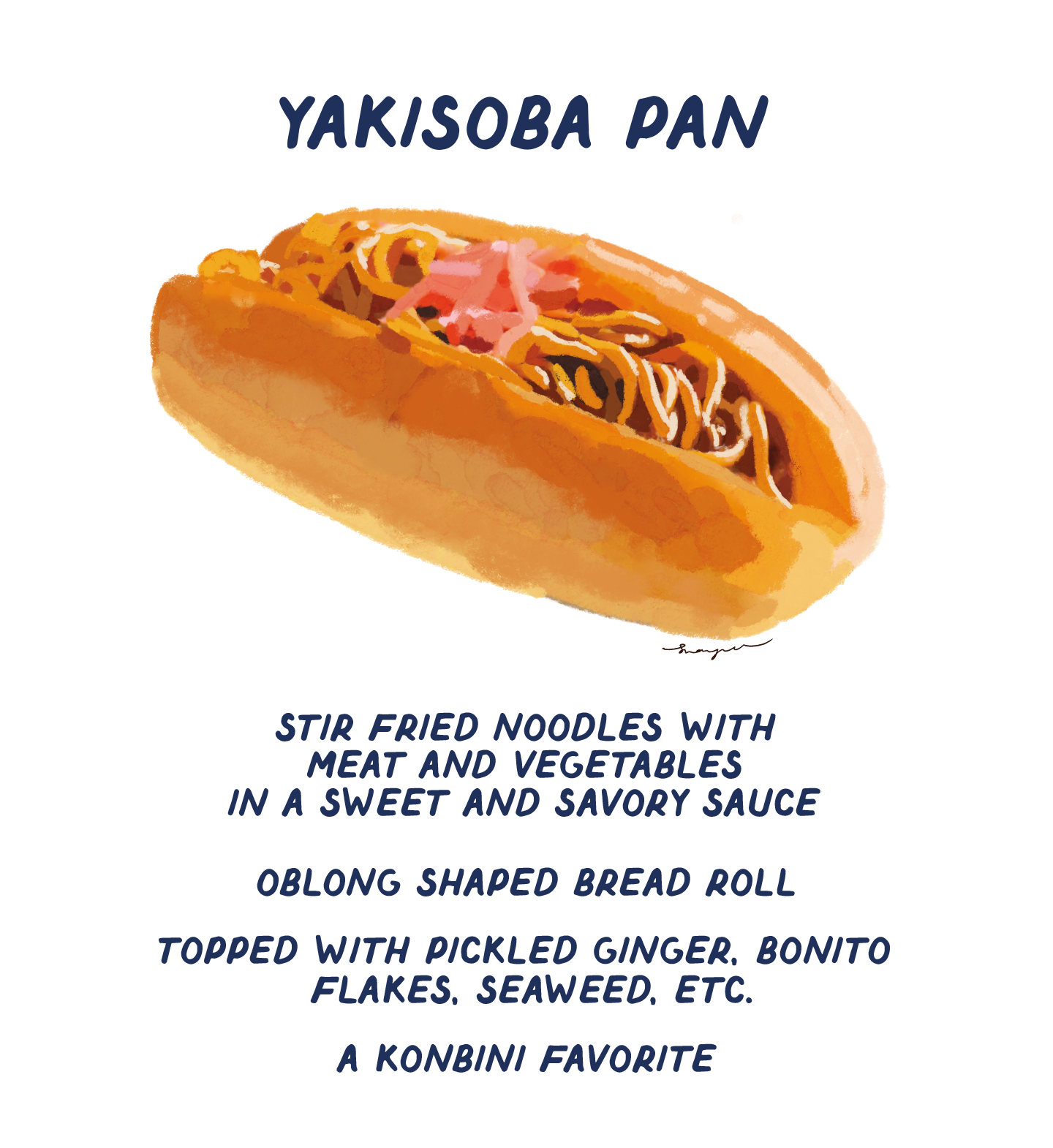Field Notes, No. 1: An Illustrated Overview of Bread Culture in Japan
Let's get this bread 🍞
Field Notes is a new illustrated column exploring the ever-changing landscape of cross-cultural cuisine. Here, we uncover how historical and cultural encounters (e.g. via migration, trade, colonialism) have given rise to unique culinary phenomena—creating dynamic intersections where diverse food cultures blend and evolve. Unless specified, all illustrations are lovingly crafted by Shayne herself.
If you’re like me, a trip to Japan isn’t complete without stepping into one of those self-serve bakeries—a pair of mini tongs in one hand, and a plastic tray in the other—where you’re faced with a dizzying variety of baked goods in display cases, staring back at you from the other side of the glass. And if you’re like me, your decision paralysis keeps you stuck in the same section, eyes darting between the chocolate corneto and the melonpan. Then, between the sausage rolls drizzled with ketchup and custard cream buns. Then, finally shifting your glance toward the sandos, which further begs the question: should we go for the ones filled with sweet cream and fruit, or the ones stuffed with thick slices of pork tonkatsu?
Though these foods are very much a widely-adored, beloved part of Japanese food culture, this hasn’t always been the case. In fact, the Japanese didn’t give yeasted bread a second glance when it made its first appearance almost five centuries ago; years of westernization and culinary creativity gave way for Japan to not only fall in love with it, but really make it its own. In a land of rice and noodles, bread’s evolution within Japanese foodways from a relatively unknown entity to an integral culinary staple is nothing short of a cultural toast.
The story goes that bread was first brought to Japan by Portuguese traders and missionaries around the mid-1500s (pan, in fact, is the Japanese pronunciation of the Portuguese word pão), though it didn’t necessarily garner mainstream attention by the locals right away. Bread’s gradual adoption into the Japanese diet truly began during the Meiji Restoration in 1868—an era in which Japan actively sought to modernize its society through rapid industrialization, political reform, and cultural westernization. This, of course, included the adoption of Western culinary practices, and it was during that process when bread’s popularity began to rise (pun fully intended here), evolving from a gate-kept luxury privy to the elite to a more commonly-enjoyed staple throughout the late 19th and early 20th centuries due to the country’s increasing openness to Western foodways and quick urbanization.
At first, bread consumption was limited to regions with larger foreign settlements (e.g. Yokohoma). In fact, it was in Yokohama where many immigrant-run bakeries opened; the Japanese who worked there learned how to bake Western bread, and later passed on their skills and knowledge to other parts of the country. Legend has it that the famed shokupan—pillow-soft and milky-sweet white bread, also referred to as milk bread—originated from British baker Robert Clarke, who opened Yokohama Bakery in the late 1860s.
It was also during this “reintroduction” period when we began seeing the proliferation of breads made uniquely Japanese. Bun’eido, for example, remains the first and longest-standing Japanese-owned bakery; it was opened by samurai-turned-baker Kimura Yasubei in 1869 as part of a response to newly-opened Western diplomatic and trade posts. Bun’eido invented and popularized anpan, a soft and golden bun filled with an—sweetened paste made from azuki beans, a beloved ingredient in Japanese sweets. What truly distinguished it from the conventional Western bread, though, was its use of sake yeast as its leavening agent. Now known as Kimuraya, the bakery still stands in Tokyo’s Ginza district, and churns out thousands of buns each day—some filled with an, others with corn, and even a few with cherry blossom butter during the springtime.
Fast forward to shortly after World War II, which marked a turning point for bread in Japan. American influence and the increased need for convenient, but affordable foods further boosted bread’s popularity. Food shortages meant that bread (made with wheat flour supplied by the United States) became a primary source of carbohydrates instead of rice; it was then when buns, rolls, and loaves truly found their place in the Japanese diet. Bakeries across Japan flourished throughout the following decades, boasting display cases stocked with creative takes on bread, enriched by Japanese ingredients and culinary methods to suit local palates. (Think sweet buns filled with curry, or oblong-shaped bread rolls split open and stuffed with fried noodles).
Today, bread is ubiquitous in Japan. Bakeries are renowned for their innovative approach to the craft, continuing to blend Western techniques with thoroughly Japanese ingredients to craft unique baked goods. Not only that, bread has become an integral part of an everyday meal; its prevalence is evident in convenience stores through shelves of sweet and savory snacks people can grab and eat. What was once relatively unknown has evolved into a versatile and integral part of Japanese food culture, something that’s blended seamlessly into their way of eating—truly, a testament to Japan’s embrace of and adaptation to global influences while staying true to its unique culinary identity.
Things you’d might like to make :)
Sources, additional readings:
“Japan’s Dietary Transition and Its Impacts” by Vaclav Smil and Kazuhiko Kobayashi (2012)
“A short history of ‘real’ bread in Japan” by Kaori Shoji for Japan Times (2015)










